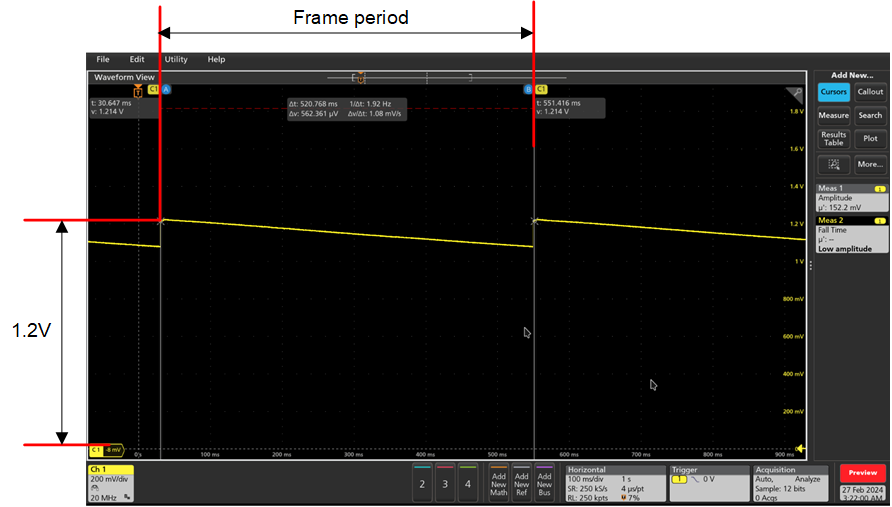TIDUFA8 November 2024
- 1
- Description
- Resources
- Features
- Applications
- 6
- 1System Description
- 2System Overview
- 3System Design Theory
- 4Link Budget
- 5Hardware, Software, Testing Requirements and Test Results
- 6Design and Documentation Support
- 7About the Authors
2.4.3.3.1 RF 1.2V Supply
The RF sub-system of the IWRL6432, in BOM optimized mode is powered by an internal 1.2V LDO. When low power mode is disabled, the supply voltage always stays at 1.2V.
When low power mode is enabled, the RF supply line stays at 1.2V during the active chirping time and then falls slowly. In the deep sleep mode, the analog and RF sub-systems are powered down. The connected external decoupling capacitor, eventually discharges the supply line. Figure 2-15 shows this behavior of the 1.2V RF power supply.

Figure 2-15 1.2V RF Supply
Depending on refresh rate and or duty cycle, the voltage level for 1.2V RF can drop to any voltage level down to 0V. A slow discharge waveform is expected for this signal.